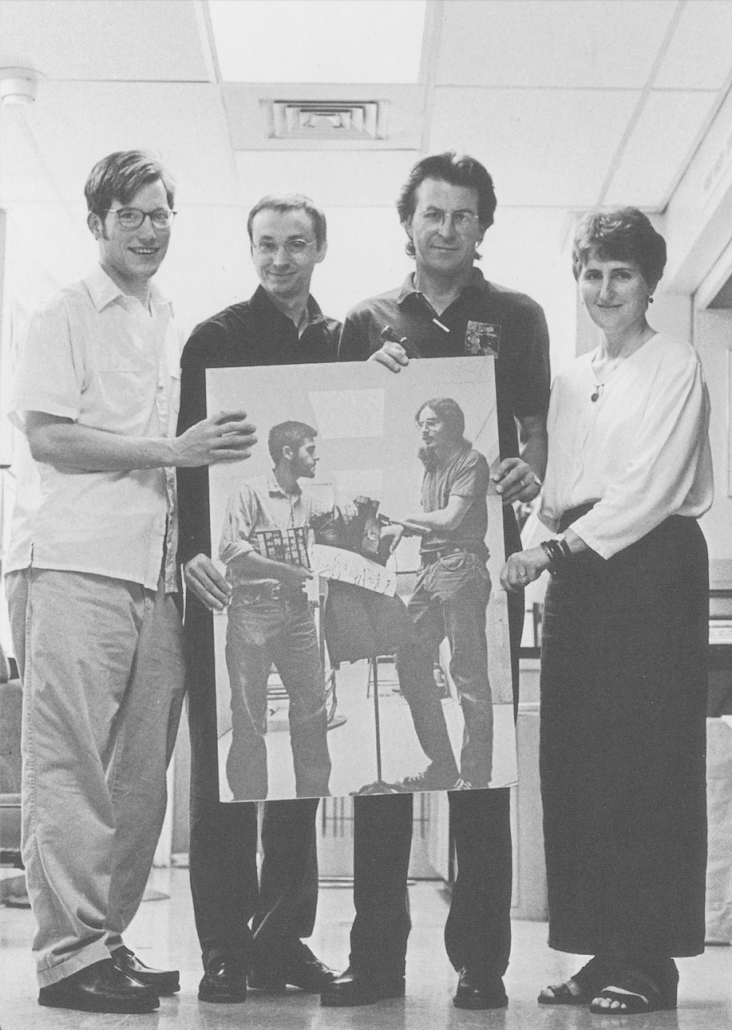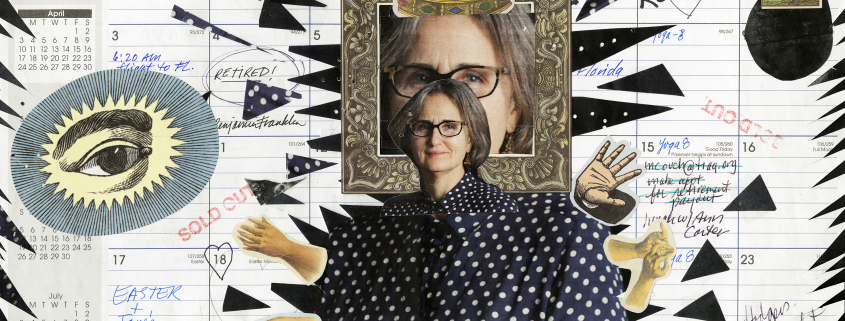Retirement Reflection:
Mary Lee Hodgens
In 1995 I started working for Light Work a couple of days a week as an office assistant. Mostly I entered new Contact Sheet subscribers into a simple database on a computer the size of a mini-fridge. The office was cramped and pretty dodgy, filled with mismatched, used furniture and rickety, metal shelving. I remember the swivel chair I sat in no longer swiveled and the upholstery stuffing was bursting through the worn and shabby gold fabric of the seat and arms. After recording new subscriber names that came through the mail weekly, I stamped the back of the checks and then walked to the bank and handed them to a teller. Then I swung back around the block to Cosmo’s, a greasy diner and pizza shop, long gone, and purchased a grilled cheese sandwich for my quirky office mate, the director.
Next to the office was the Community Darkroom, also cobbled together with used equipment and furniture. Literally carved out of a former cafeteria in the basement of a dorm, the space included a black-and-white wet darkroom, a color processor, lighting studio, and a computer lab. The best thing about the Community Darkroom was its incongruous mix of members—professionals, amateurs, artists, professors, students—all coming together to create and celebrate the magic of photography. The buzz and energy of the space was palpable. The artists often seemed genuinely surprised and delighted by their contact sheets, humbly acknowledging their luck. They used the words “capture” or “take” while also hoping for the grace of being in the right place at the right time, as though a photograph is at least partially a gift or a collaboration with something capricious. They shared the disappointments and frustrations of a swing and a miss, an elusive and sometimes frustrating creative process that artists never give up on. And there were always the “happy accidents,” a chemical process gone wrong or a light leak that only enhanced or added deeper meaning to an image. But for all of us, there was the energy of making.

John Freyer, Gary Hesse, Jeffrey Hoone, and Mary Lee Hodgens
hold a photograph of Light Work founders, Phil Block and Tom Bryan, c. 1973.
Photo by David Broda
In this funky DIY space, a few things really stood out to me that I remember recognizing and puzzling over. Those rickety shelves in the disheveled office held pristine piles of Contact Sheets and Menschel Gallery catalogues. Exquisitely printed, these shiny, colorful publications were pure joy to thumb through. And the essays were accessible, sincere, unpretentious. When I looked through the publications, I understood the shabby upholstery. When we mailed Contact Sheet out to the gate-keepers of the art world (gallery directors, museum curators, collectors, educators, journalists), I understood the broken swivel chair—I admired this rag-tag organization and thought this might actually work.
The most dramatic thing about Light Work was the way we treated the artists as honored guests. Every month another artist arrived with a suitcase and a camera. Light Work gave each one a check (in the 90’s it was $3,000), a furnished apartment to stay in, keys to the building, and 24-hour access. I remember many of artists arriving and attempting to express gratitude for the precious gift of time, an entire month ahead of them—the luxury of it was overwhelming. And the financial support made it possible. The artists, who arrived after a highly competitive process from among hundreds of applicants, all had an intense work ethic. Coming up for air only occasionally, they disappeared into the Community Darkroom and/or the community. They understood the gift they had earned and made the most of it.
The residency program, the community space (now called the Light Work Lab), the publications, and the galleries all flowed from the same simple idea that art is important, life-affirming, essential. And that artists need to run this space, for artists. All the talented employees, lab members, students, and artists I’ve met and worked with over the years have
been in on this truth and worked hard to make this mode of expression accessible. We have endured many high points and struggles over the past twenty-seven years—to quote my former office mate/director, “That’s why they call it work.” Light Work has had to reinvent itself many times over (and so have I), but I still feel the same way about it that I did in the beginning. That it works to give to these artists, to elevate them instead of ourselves. To honor them for the risk they take and the truth they tell. Also, I now sit on a Herman Miller Aeron chair with the lumbar roll.
Jeffrey Hoone, the recently retired executive director, hired me twenty-seven years ago and then continued to offer me and the rest of the staff many more exciting opportunities to participate in pulling this off. He insisted on listening to artists, responding to their needs, giving generously to them, encouraging them. He insisted on a steady dedication to diversity, refusing to water down the mission or build something self-serving. I hope that Light Work will always be artist-run, because resourceful, undaunted, determined, and impossible artists always seem to find a way.
Mary Lee Hodgens
Associate Director
Retired 2022
Mary Lee Hodgens



